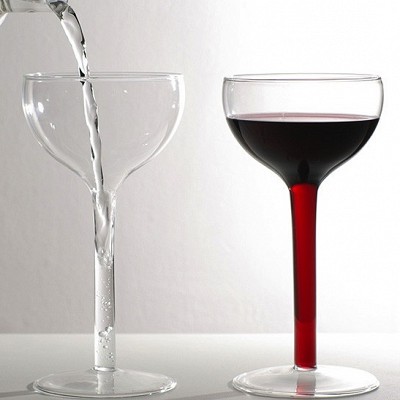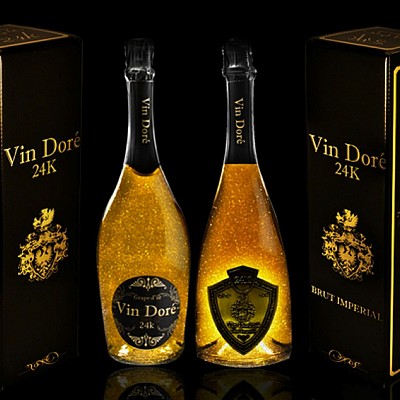A good glass of wine is a wonderful accompaniment to a great meal. However, there is debate about the health benefits of wine. Can moderate consumption of wine boost your health? It's wise to see what current research says about wine as part of a healthy diet and explore ways to imbibe without doing harm.
Misconceptions About Wine
There are plenty of falsehoods spread about wine. To sort fact from fiction, we need to look at existing studies. According to Wine Spectator, some of the most common myths about wine are:
- Wine and alcohol kill your brain cells. This idea likely arose because overindulgence impairs abilities like talking or walking. Alcohol can damage a part at the end of the cell, dendrites, but not the whole cell, and is thought to be reversible. This is a critical distinction because brain cells do not regenerate.
- Wine can help you sleep. Wine will make you sleepy because it contains melatonin, which can help you sleep. However, research shows that you’re likely to sleep poorly and wake up numerous times. There are better sleep aids if you need them.
- Sulfites in wine can cause hangovers. Many people believe that sulfites, used to preserve wine, are responsible for headaches and hangovers. The CDC reports that only 1% of the population is allergic to sulfites, and even then, it would cause an allergic reaction rather than pain. Most hangovers involve dehydration and overindulgence, but scientists have not found a clear cause yet.
With these myths out of the way, we can look at the benefits of drinking wine.
Evidence-Based Health Benefits of Wine
Wine is the result of crushed and fermented grapes, which contain many health benefits according to science. They are rich in antioxidants, compounds that support good health. One important antioxidant is resveratrol. Studies show that when taken with vitamin D, resveratrol can fight inflammation and harmful bacteria while helping the body protect itself against diseases like cancer and heart disease. It can also protect your brain from memory loss as you age.
Grapes also contain many other antioxidants and nutrients, including polyphenols that help fight heart disease, oxidative stress, and obesity; flavonoids that protect your cells from damage; vitamin K for healthy bones; and a healthy amount of fiber to promote good digestion.
While not complete, current research demonstrates that antioxidants in red wine may be good for your health. Potential benefits include:
- Proanthocyanidins, which protect the heart and may help prevent cancer. They may have other benefits like preventing blood clots and supporting brain function.
- Quercetin, which may help prevent allergies and acts as an antihistamine. It may also slow the growth of cancer cells, reduce heart disease, and lower cholesterol.
- Epicatechin, which shows promise in preventing and treating Parkinson's Disease in targeted mitochondria treatments. It also improves heart health and is similar to insulin.
White wine also contains antioxidants. In addition to resveratrol, it contains flavonoids, caffeic acid, and glutathione.Flavonoids have anti-inflammatory, anticancer, and immune-supporting properties and may help prevent allergies. Caffeic acid is thought to have anti-inflammatory, antiviral, and anticancer properties. It may also slow the progress of cardiovascular and kidney disease.
Glutathione is often added to white wine to preserve taste and smell. This antioxidant has been linked to protecting cells, helping build and repair tissue, and supporting healthy immune function. Some people use glutathione to fight alcohol use disorder, liver disease, and heart disease but more evidence is needed to support this.
Adding wine to your diet can be beneficial for some people.
Tips for Selecting a Good Wine
You will appreciate wine better by making good choices. First-time wine drinkers can benefit from some tips that improve the experience. In addition to sampling different varieties to learn what best suits you, you should also learn to taste wine. Swish it in the glass and then sniff to smell its notes. Next, swish it in your mouth to get the feel. You can swallow it if you’re trying just one bottle or spit it out for a wine tasting.
What should you look for in a good wine? Consider what flavor notes you are seeking for the occasion, such as sweet, bold, delicate, or spicy. When buying wine for others, you may want to stick to a sweet wine as it tends to be more popular. If it’s for a meal, match the wine to the food. The wine store can help you choose.
When sampling, make sure you are buying from a good quality store. Many will let you sample the wines. When buying online, you must rely on photos and descriptions.
Precautions When Imbibing
Wine is wonderful to enjoy when used responsibly. However, there are also some possible health-related drawbacks of drinking wine.
For example, people with GERD should note that wine is on the list of foods to limit or avoid. Alcohol can hurt the digestive system of people with GERD, causing stomach inflammation and irritation. It can also disrupt the proper functioning of the esophageal sphincter and cause other symptoms. Researchers are not clear on what causes this link.
Wine can also pose risks if you are pregnant or trying to get pregnant, take medicine that interacts with alcohol, have a history of substance use disorder, or other medical conditions. Check with your doctor if you're not sure if you can drink wine.
Drinking a five-ounce glass of wine is generally safe for people without the conditions mentioned. Exercise good judgment by avoiding binge drinking, so you can enjoy it without a hangover.
Despite many misconceptions, wine provides health benefits for moderate drinkers. Its antioxidants can support a healthy body, but those with certain medical conditions should avoid it. When used responsibly, wine is a satisfying and pleasurable experience.






































